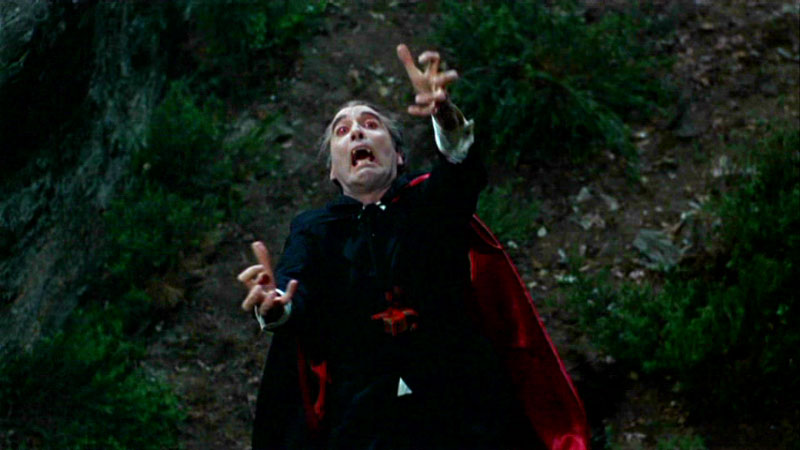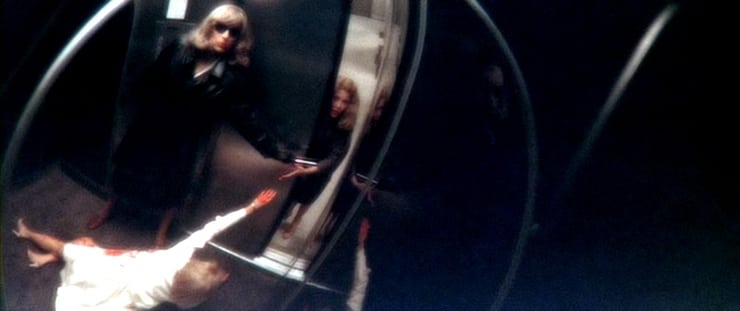SPOILER WARNING: THIS POST GIVES AWAY THE ENDING OF THE FILM!
Even though the early ones were groundbreaking in their use of sex, violence and gore, one doesn’t usually think of Hammer films as being especially gruesome these days, in fact most of them come across as rather tame. One thing they always seemed able to do though was give their most popular character, Christopher Lee’s Count Dracula, a memorable send-off. From decomposing in the sunlight to being struck by lightning to falling through ice into water, in some cases the vampire’s demise was the most memorable part of the film and certainly something on which a great deal of effort was usually expended. Dracula Has Risen From The Grave [1968] was Hammer’s third Dracula outing and one which saw them increasing the blood and the sexual aspect, resulting in the most erotic vampire attack scenes the studio ever created, though at the expense of interesting plotting. Lee constantly complained, quite rightly, that Dracula was never given enough to do, but the actor certainly threw himself with enthusiasm into what was without a doubt the most bloody and drawn-out of the Count’s deaths in the series.
Dracula is mighty pissed off because a nasty priest has hung a cross upon the door of his castle [surely he would have known about another entrance?], stopping him from entering. He gets our heroine Maria, played by the absolutely gorgeous Veronica Carlson, to remove the offending article, which she does with difficulty and then throws it over a wall and down the hill [Dracula’s castle, which seems to move from film to film, is now on top of a small mountain] to conveniently stick up out of the ground. Boring young male lead shows up and the Count tries to strangle him against the wall, only to fall forward and then down the hill in what is not only an example of extreme clumsiness but actually seems almost impossible. Never mind, it now gets really good as Dracula falls onto the cross, the camera zooming in to show the nasty impalement. For a couple of minutes, he writhes in pain and makes a horrid sound like someone gargling water and being strangled at the same time. Do we almost feel sorry for him, who in this film only wanted to go into his home?
In this episode though, Dracula can’t die unless a priest says something religious [or something], so the one priest still alive steps forward to say the required Latin words and the vampire, after crying tears of blood in a very arresting and occasionally copied image, finally perishes. Special mention goes to James Bernard’s powerful scoring, who gives appropriate musical backing to each occurence, finally breaking into a kind of religious epiphany. The whole sequence, Dracula’s bizarre fall notwithstanding, is a great little set piece and is a great example of Hammer filmmaking; exciting, visually striking, bloody without going overboard, and just that little bit funny.
[youtube]https://youtu.be/yrtCawfjDrE[/youtube]






Be the first to comment